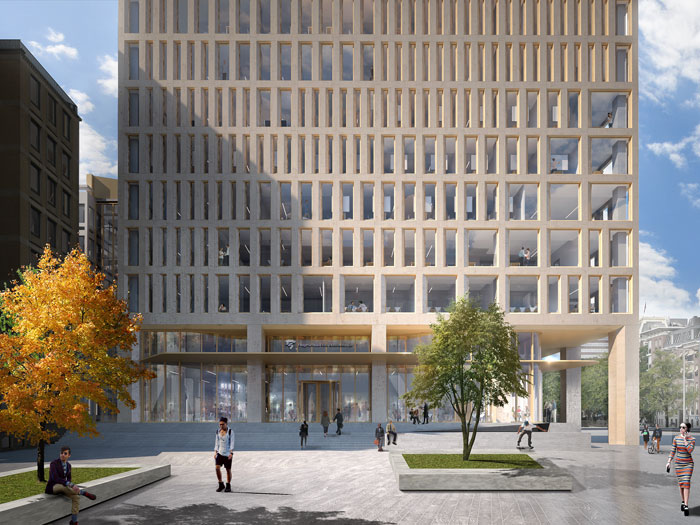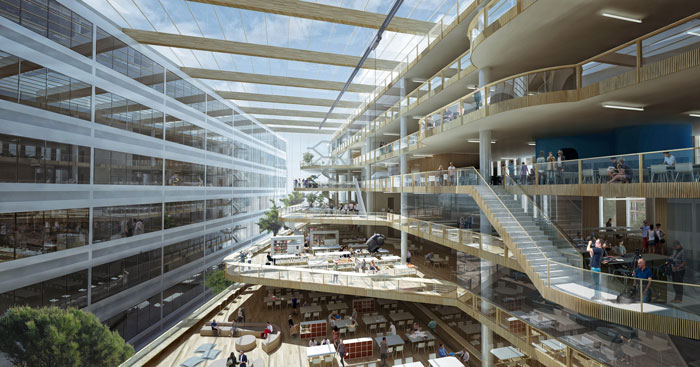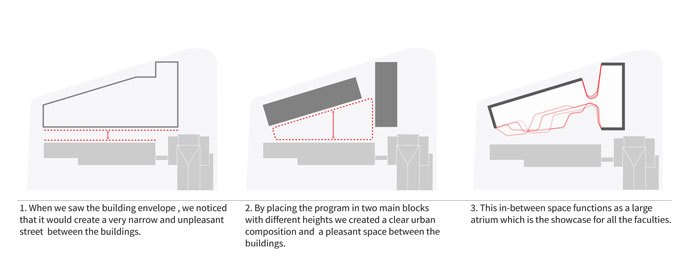- Share
- Like
- Tweet
- Digg
- Tumblr
- VKontakte
- Love This
- Odnoklassniki
- Meneame
- Blogger
- Amazon
- Yahoo Mail
- Gmail
- AOL
- Newsvine
- HackerNews
- Evernote
- MySpace
- Mail.ru
- Viadeo
- Line
- Comments
- SMS
- Viber
- Telegram
- Subscribe
- Skype
- Facebook Messenger
- Kakao
- LiveJournal
- Yammer
- Edgar
- Fintel
- Instapaper
- Copy Link
The Rhijnspoor Building, designed by Team RSG, a collaboration between Powerhouse Company, de Architekten Cie. and Marc Koehler Architects, has been awarded a BREEAM certificate rating of ‘Excellent’ with 4 stars by the Dutch Green Building Council, ahead of its completion in 2018. This internationally recognized certificate rewards the upcoming Rhijnspoor Building for the Amsterdam University of Applied Sciences with the highest-ever score achieved by an educational building in the Netherlands.

Image © MIR
Located on a prominent end-site that marks the entrance to the campus from the historic centre in the south of Amsterdam, the combined 13-storey tower and 6-storey urban block – characterized by its huge connecting atrium – will house the new centre of technology at the university. Each department within the faculty will have its own floor level, complete with a ‘showcase’ terrace that opens onto the expansive and day-lit atrium to form a lively and more public face.

Image © MIR
Sustainability has been a driving force for the project since its start. As well as questions regarding how to encourage the advancement of knowledge through meeting and exchange, and future-proof a building against changes in technology and pedagogy, the architect wanted to optimise form and function in a sustainable way. Among others, it used BREEAM and the government directive on reducing energy consumption in educational buildings, Frisse Scholen (Fresh Schools), as bases to minimize long-term operational costs and create a higher-quality building for its users.

Image © MIR
These ambitions have been achieved through the comprehensive implementation of green technologies and features; from energy generation via photovoltaic panels through to recyclable materials on the facade such as aluminium. Other standout features include: LED intelligent lighting throughout, climate control ceilings and clean air exchange ventilation for thermal comfort, sedum roofing, bird houses for swallows, a seasonal thermal energy storage system and automated facade screens for sun shading. The features combine to result in a building that requires 40 per cent less energy per metre square to run than recommended Dutch building regulations.

Image © Powerhouse Company
Facts:
Location: Amsterdam, the Netherlands
Client: Hogeschool van Amsterdam
Area: 24,000m2
Team:
Powerhouse Company: Nanne de Ru, Stefan Prins, Ard-Jan Lootens, Stijn Kemper, Jeffrey Ouwens, Sander Apperlo, Joan Marion, Jessie Andjelic, Sybren Woudstra, Antoine van Erp
de Architekten Cie.: Pi de Bruijn, Frank Segaar, Rink Alberda, Kevin Laurence Snel, Nicola Placella, Leo de Jong, Ron Garritsen, Louis Afonso, Paulos Kinfu, Boris van Gorkom, Jolein Haeck, Andrew Page
Marc Koehler Architects: Marc Koehler, Carlos Moreira, Thomas Wellink, Elisa Diaz-Llanos Lorenzo, Drazen Krickovic, Maarten Verhelst, Loed Stolte
Structural engineer: BREED Integrated Design, ABT
Installation Engineering: Royal Haskoning DHV
Images: MIR
*All information courtesy of Powerhouse Company.
